14. No Country for Old Men
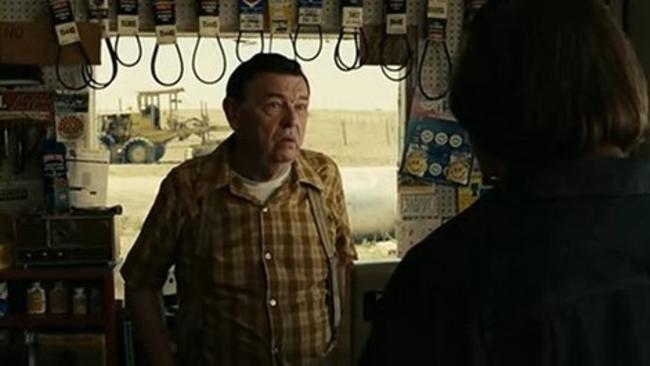
A man comes through the door of the little store attached to your gas station. You just had your morning coffee that got you ready for facing any shenanigans the day might throw at you. You ask this man if people are getting any rain in the place where he’s from; your mean nothing by it, you’re just trying to make conversation with an unexpected passerby, but the stranger with the weird haircut is a little paranoid.
You don’t want any trouble, but this individual’s attitude is strange and hostile. He starts asking a few personal questions that sound more like threats in disguise.
You’re still a bit puzzled by the whole situation when he flips a coin in the air and stops it on the counter, covering it with his hand. He says “call it” and his face contracts in a way that you don’t like at all. The gentleman starts talking about how that coin traveled 20 years to get to this moment, to this destined coin toss. You’re done enduring any more craziness in your establishment and finally call it: “Heads, then”. He removes his hand, letting Washington’s face on sight: “Well done” he says, and hands you the quarter claiming that you shouldn’t put it in your pocket, because it’s your lucky quarter.
It’s amazing how this guy thinks that he’s just facing a random loon that got into his store, is clueless about the fact that he was just about to die, and everything depended on that coin toss. Javier Bardem’s character seems to think that he’s a sort of cosmic justice maker, and his intimidation abilities are unmatched.
Bardem’s performance is what gives credibility to this whole random deadly dialogue scene in the middle of the desert. He truly acts like the most dangerous psychopath in the world.
The rhythm of the scene is responsible for building up the tension. Although it’s his store, we see how the owner feels trapped by the stranger’s words, how he’s cornered behind the register as every sudden cut (in this, the Coen’s signature shot-reverse-shot) makes us fear the next one.
Best lines: Gas Station Proprietor: “I didn’t put nothin’ up.”
Anton Chigurh: “Yes, you did. You’ve been putting it up your whole life you just didn’t know it. You know what date is on this coin?” G: “No.” A: “1958. It’s been traveling twenty-two years to get here. And now it’s here. And it’s either heads or tails. And you have to say. Call it.”
G: “Look, I need to know what I stand to win.”
A: “Everything.”
13. The Social Network
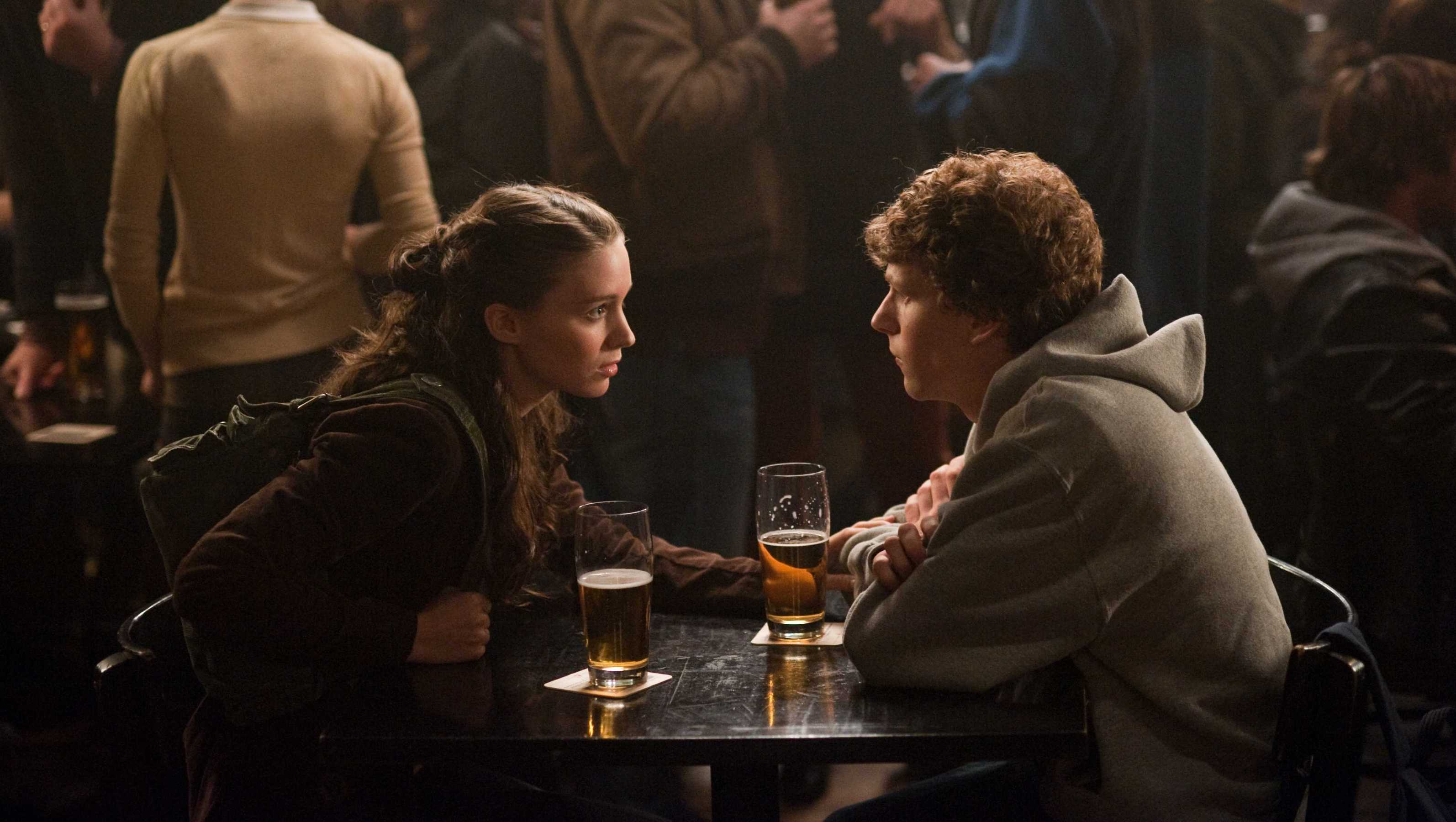
I think there are only two ways of making a good movie based on real-life events. The first way is not giving a single fuck about the real facts, and the second way is portraying everything exactly as it happened. Any film that lies in the middle of these two aspects could be called an insecure mess; “Argo”, “Joy” and “Captain Phillips” are a few examples.
“The Social Network” follows the first way, as it’s seen in its marvelous opening scene in which Mark Zuckerberg and his girlfriend Erica are having a fast-paced chat in a campus bar at Harvard.
Mark seems to be obsessed with final clubs and prestige, while Erica doesn’t really see the point of those groups. He cares too much about his reputation and is portrayed as a very insecure guy; from the get go, Zuckerberg’s whole motivation to create Facebook is to have revenge on his now ex-girlfriend after this scene, which of course isn’t true to real events.
The dialogue is masterfully written by Aaron Sorkin, and the flow of the conversation is natural as they get confused and sometimes don’t understand what the other is saying. Both actors do an outstanding job at maintaining the mood.
The editing follows the rhythm of the conversation, while the dim lightning compresses every reaction in the faces of the actors. All these cinematic tools are built upon the amazing song “Ball and Biscuit” by The White Stripes, which makes the whole scene extra memorable.
Best lines: Erica Albright: “You are probably going to be a very successful computer person. But you’re going to go through life thinking that girls don’t like you because you’re a nerd. And I want you to know, from the bottom of my heart, that that won’t be true. It’ll be because you’re an asshole.”
12. The Thin Red Line
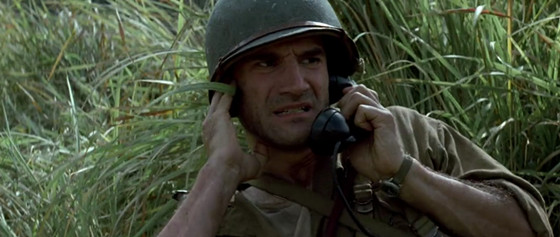
In this 1998 epic war movie, there’s quite a bit going on; so much so that director Terrence Malick had to cut out several hours of material, along with entire performances and character’s storylines, to make the film watchable.
However, what was left constitutes an excellent and unique film with a lot of substance and thrilling combat scenes. The best dialogue in “The Thin Red Line” takes place during one of these hellish battles.
Lt. Col. Gordon Tall is communicating with Capt. James ‘Bugger’ Staros by a (for lack of a better word) special war phone. Staros is leading a group of soldiers in an attempt to take the hill in which the Japanese are crammed up in. They’re facing extreme resistance and many soldiers are dying, and he and his men are hiding behind a ledge waiting for reinforcements. Tall orders Staros to send all of his men to attack the Japanese directly, and Staros knows in doing that, he would be sentencing his fellow soldiers to death. He argues with Tall and refuses to obey a direct order from him; Tall goes speechless, as does everyone in Staros’s squadron.
Nick Nolte’s and Elias Koteas’s performances are amazing. Nolte is intense as he tries to make the captain follow his orders, while Koteas carries out a dangerous negotiation with his men’s lives on the line. The incessant roar of gunshots and bombs is present throughout the whole conversation, representing the imminent danger these soldiers must face sooner or later.
Best lines: Capt. James ‘Bugger’ Staros: “I’ve lived with these men, sir, for two and a half years and I will not order them all to their deaths.”
11. Birdman
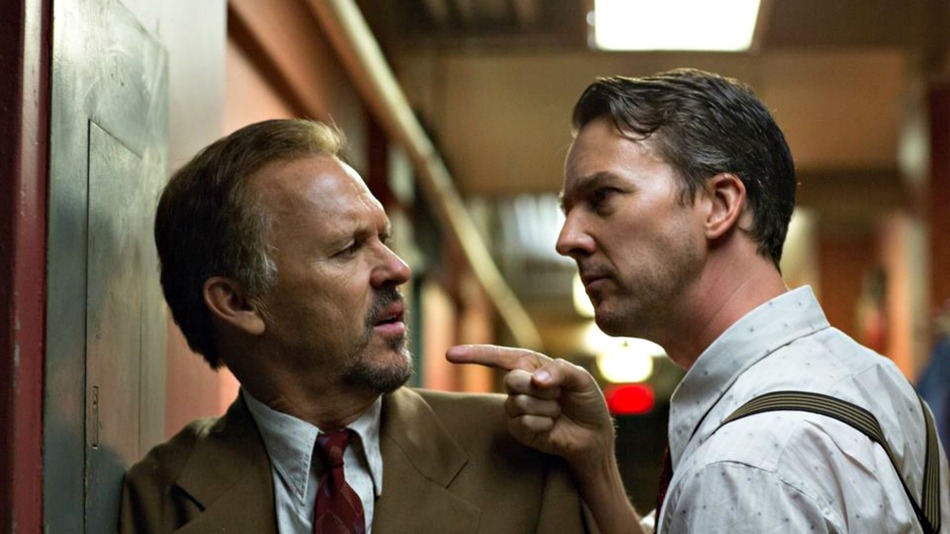
When people say that an Alejandro González Iñárritu movie is a masterpiece I tell them the same thing I would to a 5-year-old stating that the sky is blue: “Of course it is, fool. Go be redundant elsewhere.” Because, although he has only made six films, they’re all revolutionary, deep, and truly excellent.
With “Birdman”, he created one of the best pieces of art of the last century, combining outstanding performances from every actor, amazing cinematography by Emmanuel Lubezki, and a great script that earned him a plethora of awards.
“Birdman” is filled with excellent dialogue, but the best is between Michael Keaton and Edward Norton, both playing actors who are at odds with each other.
Keaton’s character, Riggan, needs a new actor for the play he’s directing, so his agent calls Mike (Edward Norton), a Broadway star known for being quite hard to work with. Their encounter starts abruptly when Mike begins to criticize the script, wanting to start rehearsing a random scene without paying attention to the technicalities; this leads to an awesome showdown between these two great actors where Norton’s character proves his talent, getting the part and Riggan’s admiration along with it.
The dialogue was based on a real conversation between the director of the movie and Edward Norton, in which the actor interrogated Iñárritu about the script and the purposes of each character.
The stage where this scene takes place was beautifully lit by cinematographer Emmanuel Lubezki; the smooth camera movement and the lack of cuts give a special flow and rhythm to the dialogue. Along with Antonio Sanchez’s cool beats, Keaton’s and Norton’s first meetup is exciting and fun.
Best lines: Mike Shiner: “Okay, just stay with me. ‘I’m the wrong person to ask,’ he says, but what is that, what is the intention in that? Is he fed up with the subject so he’s changing it, is he deflecting guilt over the marriage? And here’s the thing, you’ve got four lines after that that all say the same thing. ‘I didn’t even know the man, I only heard his name mentioned in passing, I wouldn’t know, you’d have to know the particulars…’ The point is, you don’t know the guy, we f – king get it. Make it work with one line: ‘I didn’t even know the man.’ Right?”
Riggan: “Right. Yeah. You know my lines too, huh?”
M: “Can we not get hung up on knowing lines?”
10. Breathless
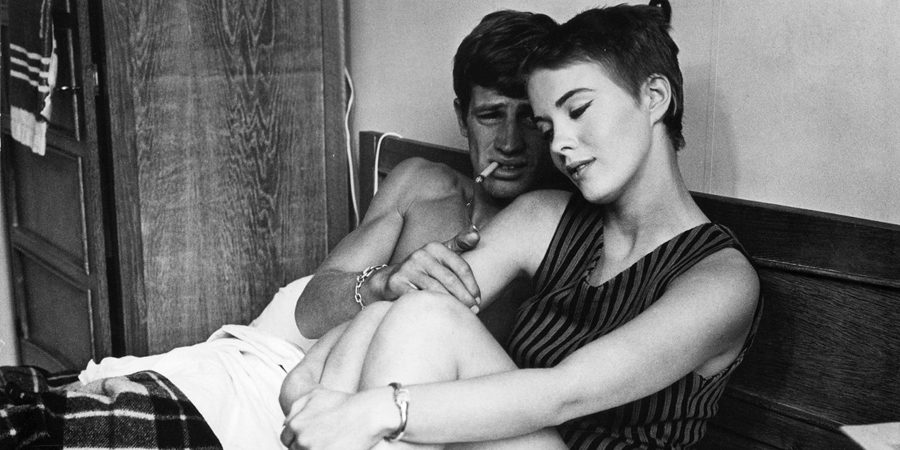
Kicking off the French New Wave like a watermelon down a cliff, Jean-Luc Godard’s genius pours out from every corner of this movie.
Inspired by American gangster flicks, this film’s protagonist is on the run after impulsively killing a cop. While he’s in hiding, Michel hangs out with Patricia, an attractive American who works in the New York Herald Tribune’s International edition in Paris.
The dialogue scene takes place in Patricia’s small hotel room. Although he’s in big trouble, Michel refuses to leave her side. She acts angrily but can’t resist his charismatic approaches. The conversation wanders around Michel’s jealousy and loose commentaries about their relationship as they both smoke cigarettes.
They never speak about a specific topic, mostly due to Godard’s chaotic editing technique that later would inspire filmmakers like Lars von Trier to do the same. When his producer told Godad that the movie was too long, instead of chopping a few scenes off the film, Godard deleted short bits and pieces, making “Breathless” far more dynamic, quirky and fun.
The dialogue was filmed in Jean Seberg’s (the actress who played Patricia) real hotel room; it was so small that filming was tricky with the crew all crammed inside, but it was worth it. The natural light looks beautiful along with the classic black-and-white aesthetic.
Best lines: Patricia Franchini: “Do you know William Faulkner?”
Michel Poiccard: “No. Who’s he? Have you slept with him?”
9. Dancer in the Dark
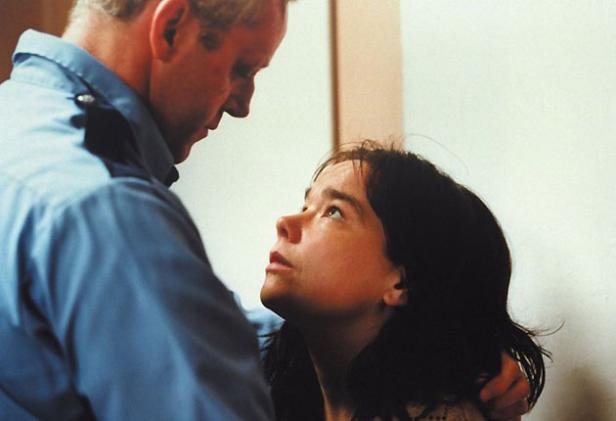
Lars von Trier’s technique for filming dialogue is outstanding; his objective is to capture moments and feelings, instead of just wanting to advance the plot. Because he also operates the camera, the director is able to interact with his actors in a very intimate manner, giving directions every step of the way and also awarding freedom when it’s convenient.
This dialogue scene is the pivotal one of the entire film; the essential character development is delivered in a fluent way by gestures and outstanding acting by David Morse and (my personal favorite actress) Björk.
In the film, the protagonist is going blind due to a hereditary condition. She’s working overtime in a factory to save money to pay for her son’s eye surgery; Selma’s only wish is that her son would live a better life with normal eyesight.
She’s talking with her friend Bill after a busy day, and Selma notices that something’s wrong with him and asks him about it. Bill confesses, as he weeps, that he’s broke, he inherited a lot of money, but it’s all gone. The protagonist feels the necessity to open her heart to him in this difficult time; Selma confesses that she’s going blind, and can barely cover basic expenses while saving up to Gene’s surgery. The protagonist talks about her coping mechanisms that will constitute the musical element of the film.
The scene is truly emotional, sets the tone for the rest of the movie, and Von Trier’s choppy editing method structures a very unusual and warm tone that is inherent of “Dancer in the Dark”.
Best lines: Selma: “You like the movies, don’t you?”
Bill Houston: “I love the movies. I just love the musicals.”
Selma: “But isn’t it annoying when they do the last song in the films?”
B: “Why?”
S: “Because you just know when it goes really big… and the camera goes like out of the roof… and you just know it’s going to end. I hate that. I would leave just after the next to last song… and the film would just go on forever.”
8. The Dark Knight
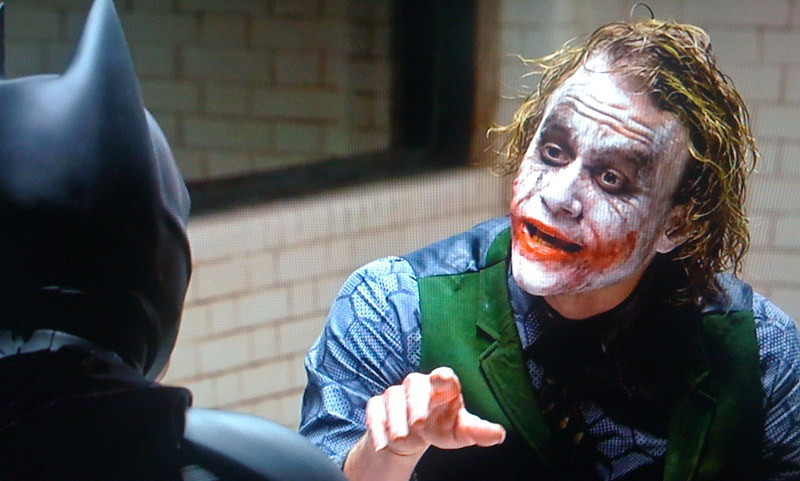
I think Christopher Nolan was hired by Marvel to destroy DC from the inside; as a matter a fact, I know he was. “How could you know that?” you may ask. Well, that’s a good question for another time.
Marvel’s plan was masterful: pay a brilliant director millions of dollars so he agrees to make a few Batman films that are so good that DC would try, unsuccessfully, to replicate the same style forever, getting trapped in an endless spiral of disappointment and mediocrity (See “Batman v Superman”).
Surprisingly, the best scene in this entire superhero franchise is the dialogue with the Joker, in which Batman interrogates the clown in order to find out the location of Harvey Dent.
The Joker, being a jerk and all, isn’t going to let Bruce go rescue his friends without philosophically analyzing his situation like an evil insufferable Socrates. Batman gets violent after his enemy reveals he also kidnapped his former girlfriend, and that he’s going to have to choose only one to save.
Heath Ledger’s performance as the Joker is unbelievable. His voice, his gestures, his laugh and the excellent script constitute the best comic book movie villain to date. I imagine that it was very easy for Christian Bale to get in character for this scene after seeing the madness that Ledger was expressing; he even allowed Bale to actually beat him up, to preserve authenticity. He’s responsible for one of the best acting jobs of all time.
Best lines: The Joker: “Don’t talk like one of them. You’re not! Even if you’d like to be. To them, you’re just a freak, like me! They need you right now, but when they don’t, they’ll cast you out, like a leper! You see, their morals, their code, it’s a bad joke. Dropped at the first sign of trouble. They’re only as good as the world allows them to be. I’ll show you. When the chips are down, these… these civilized people, they’ll eat each other. See, I’m not a monster. I’m just ahead of the curve.”